Microstructure and Thermal Insulation Property of Silica Composite Aerogel
Abstract
:1. Introduction
2. Experimental Procedure
2.1. Material Preparation
2.2. Measurement and Characterization
3. Result and Discussion
3.1. Microstructure Characterization
3.2. Thermal Insulation Performance of Aerogel
4. Conclusions
Author Contributions
Funding
Conflicts of Interest
References
- Bolender, M.A.; Doman, D.B. Nonlinear Longitudinal Dynamical Model of an Air-Breathing Hypersonic Vehicle. J. Spacecr. Rockets 2012, 44, 374–387. [Google Scholar] [CrossRef]
- Parker, J.T.; Serrani, A.; Yurkovich, S.; Bolender, M.A.; Doman, D.B. Control-Oriented Modeling of an Air-Breathing Hypersonic Vehicle. J. Guid. Control Dyn. 2007, 30, 856–869. [Google Scholar] [CrossRef]
- Su, X.; Jia, Y.; Du, J. Modeling and input-output decoupling of hypersonic vehicles. Int. J. Control Autom. Syst. 2015, 13, 156–166. [Google Scholar] [CrossRef]
- Savino, R.; Fumo, M.D.S.; Paterna, D.; Serpico, M. Aerothermodynamic study of UHTC-based thermal protection systems. Aerosp. Sci. Technol. 2005, 9, 151–160. [Google Scholar] [CrossRef]
- Glass, D.E. Ceramic Matrix Composite (CMC) Thermal Protection Systems (TPS) and Hot Structures for Hypersonic Vehicles. In Proceedings of the 15th AIAA International Space Planes and Hypersonic Systems and Technologies Conference (AIAA), Dayton, OH, USA, 28 April–1 May 2008. [Google Scholar]
- Zhou, X.F.; Xiao, H.N.; Jian, F. Preparation, properties and thermal control applications of silica aerogel infiltrated with solid–liquid phase change materials. J. Exp. Nanosci. 2012, 7, 17–26. [Google Scholar] [Green Version]
- Liu, D.H. Heat Transfer Characteristics of High Temperature Multilayer Thermal Insulations. Aerosp. Mater. Technol. 2011, 41, 20–23. [Google Scholar]
- Liu, Z.H.; Ding, Y.D.; Wang, F.; Deng, Z.P. Thermal insulation material based on SiO2 aerogel. Constr. Build. Mater. 2016, 122, 548–555. [Google Scholar] [CrossRef]
- Li, Z.; Gong, L.; Cheng, X.; He, S.; Li, C.; Zhang, H.; Zhi, L. Flexible silica aerogel composites strengthened with aramid fibers and their thermal behavior. Mater. Des. 2016, 99, 349–355. [Google Scholar] [CrossRef]
- Li, X.; Wang, Q.; Li, H.; Ji, H.; Sun, X.; He, J. Effect of sepiolite fiber on the structure and properties of the sepiolite/silica aerogel composite. J. Sol-Gel Sci. Technol. 2013, 67, 646–653. [Google Scholar] [CrossRef]
- Hong, C.Q.; Han, J.C.; Zhang, X.H.; Du, J.C. Novel nanoporous silica aerogel impregnated highly porous ceramics with low thermal conductivity and enhanced mechanical properties. Scr. Mater. 2013, 68, 599–602. [Google Scholar] [CrossRef]
- Shi, D.; Sun, Y.; Feng, J.; Yang, X.; Han, S.; Mi, C.; Jiang, Y.; Qi, H. Experimental investigation on high temperature anisotropic compression properties of ceramic-fiber-reinforced SiO2 aerogel. Mater. Sci. Eng. A 2013, 585, 25–31. [Google Scholar] [CrossRef]
- Li, S.; Wang, C.-A.; Hu, L.; Wang, C. Improved Heat Insulation and Mechanical Properties of Highly Porous YSZ Ceramics After Silica Aerogels Impregnation. J. Am. Ceram. Soc. 2013, 96, 3223–3227. [Google Scholar] [CrossRef]
- White, L.S.; Bertino, M.F.; Saeed, S. Influence of silica derivatizer and monomer functionality and concentration on the mechanical properties of rapid synthesis cross-linked aerogels. Microporous Mesoporous Mater. 2015, 217, 244–252. [Google Scholar] [CrossRef]
- Saeed, S.; Al Soubaihi, R.M.; White, L.S.; Bertino, M.F.; Saoud, K.M. Rapid fabrication of cross-linked silica aerogel by laser induced gelation. Microporous Mesoporous Mater. 2016, 221, 245–252. [Google Scholar] [CrossRef]
- Lei, Y.; Chen, X.; Hu, Z.; Cao, B. A general strategy for improving the thermal insulation performance of aerogels by multiple impregnation. Scr. Mater. 2017, 139, 5–8. [Google Scholar] [CrossRef]
- Fan, H.; Peng, Y.; Li, Z.; Chen, P.; Jiang, Q.; Wang, S. Preparation and characterization of hydrophobic PVDF membranes by vapor-induced phase separation and application in vacuum membrane distillation. J. Polym. Res. 2013, 20, 134. [Google Scholar] [CrossRef]
- Hu, H.K.; Gan, L.H.; Li, G.G. Supercritical Drying Technology. Lab. Res. Explor. 2000, 19, 33–35. [Google Scholar]
- Wang, Q.; Li, G.; Zhao, B.; Zhou, R.X. Synthesis of La Modified Ceria-Zirconia Solid Solution by Advanced Supercritical Ethanol Drying Technology and its Application in Pd-only Three-Way high silica fibers. Appl. Catal. B Environ. 2010, 100, 516–528. [Google Scholar] [CrossRef]
- Wang, B. Brief introduction of ASTM standard on physical testing. Phys. Test. Chem. Anal. Part A Phys. Test. 2004, 5, 267–270. [Google Scholar]
- Hanus, M.; Kabeláč, M.; Rejnek, J.; Ryjáček, F.; Hobza, P. Correlated ab Initio Study of Nucleic Acid Bases and Their Tautomers in the Gas Phase, in a Microhydrated Environment, and in Aqueous Solution. Part 3. Adenine. J. Phys. Chem. B 2004, 108, 2087–2097. [Google Scholar] [CrossRef]
- Li, C.; Cheng, X.; Li, Z.; Pan, Y.; Huang, Y.; Gong, L. Mechanical, thermal and flammability properties of glass fiber film/silica aerogel composites. J. Non-Cryst. Solids 2017, 457, 52–59. [Google Scholar] [CrossRef]
- Li, Z.; Cheng, X.; He, S.; Zhi, L.; Shi, X.J.; Gong, L.L.; Zhang, H.P. Aramid fibers reinforced silica aerogel composites with low thermal conductivity and improved mechanical performance. Compos. Part A Appl. Sci. Manuf. 2016, 84, 316–325. [Google Scholar] [CrossRef]

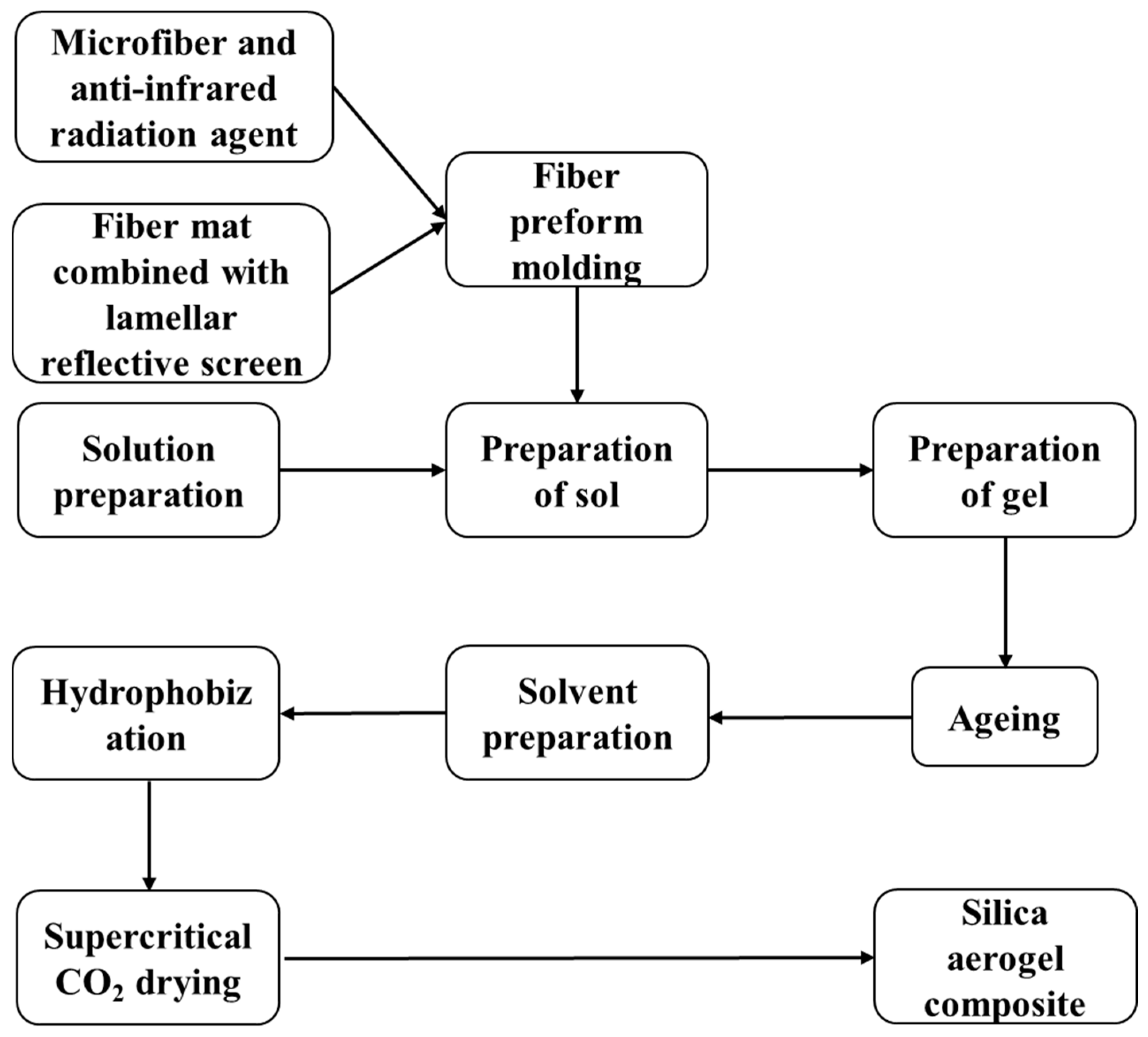
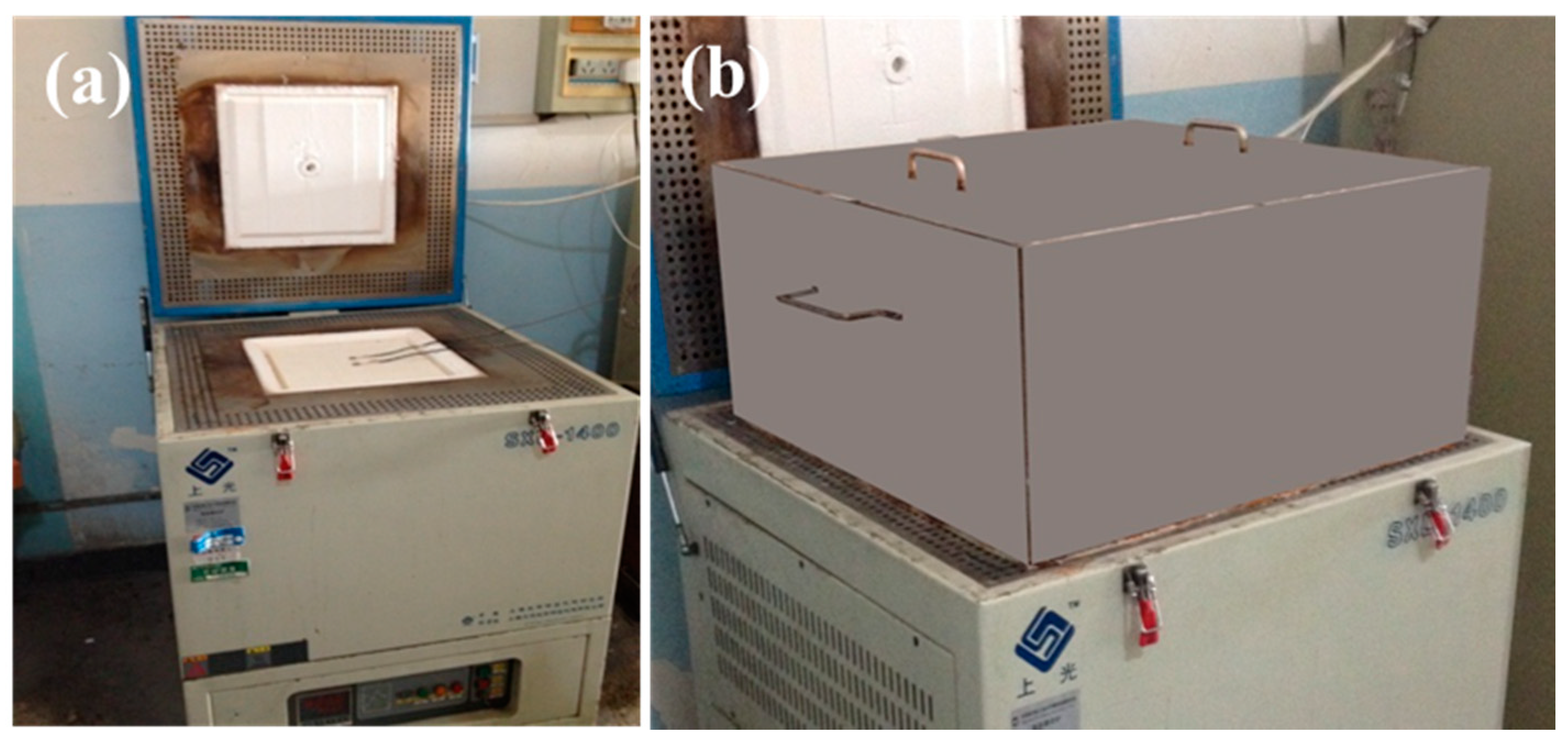
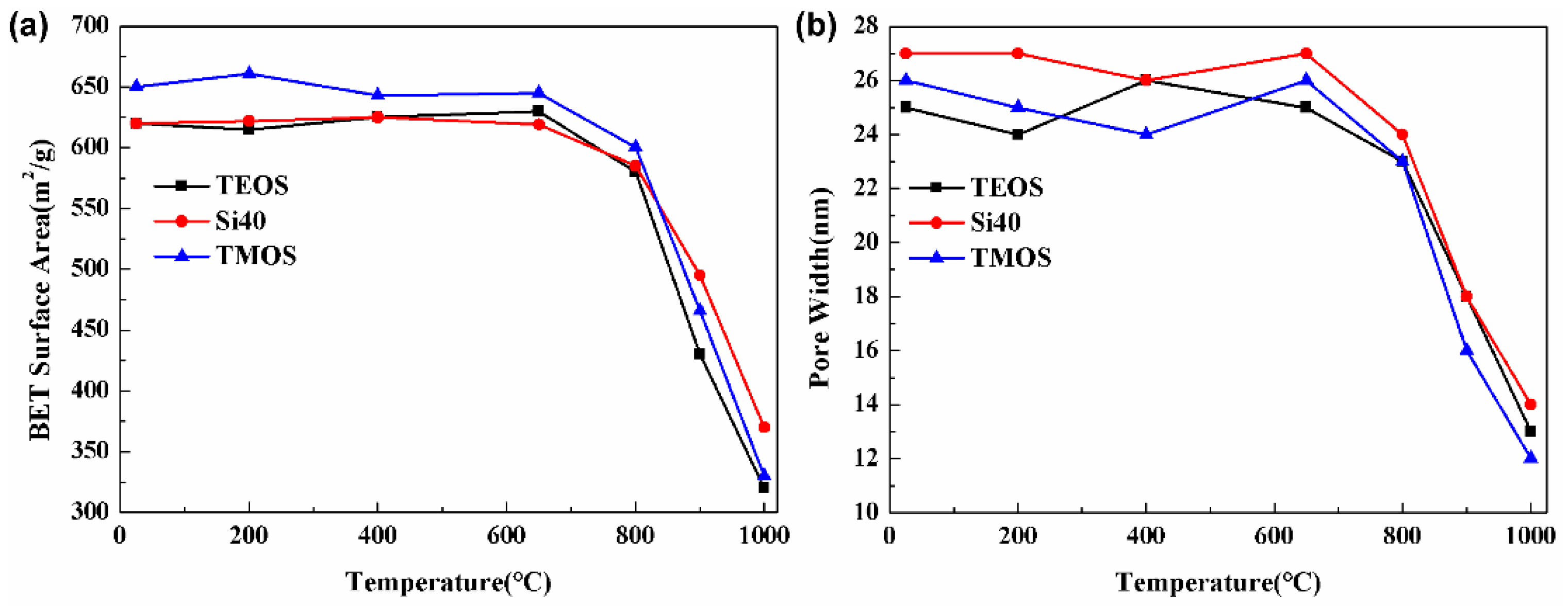
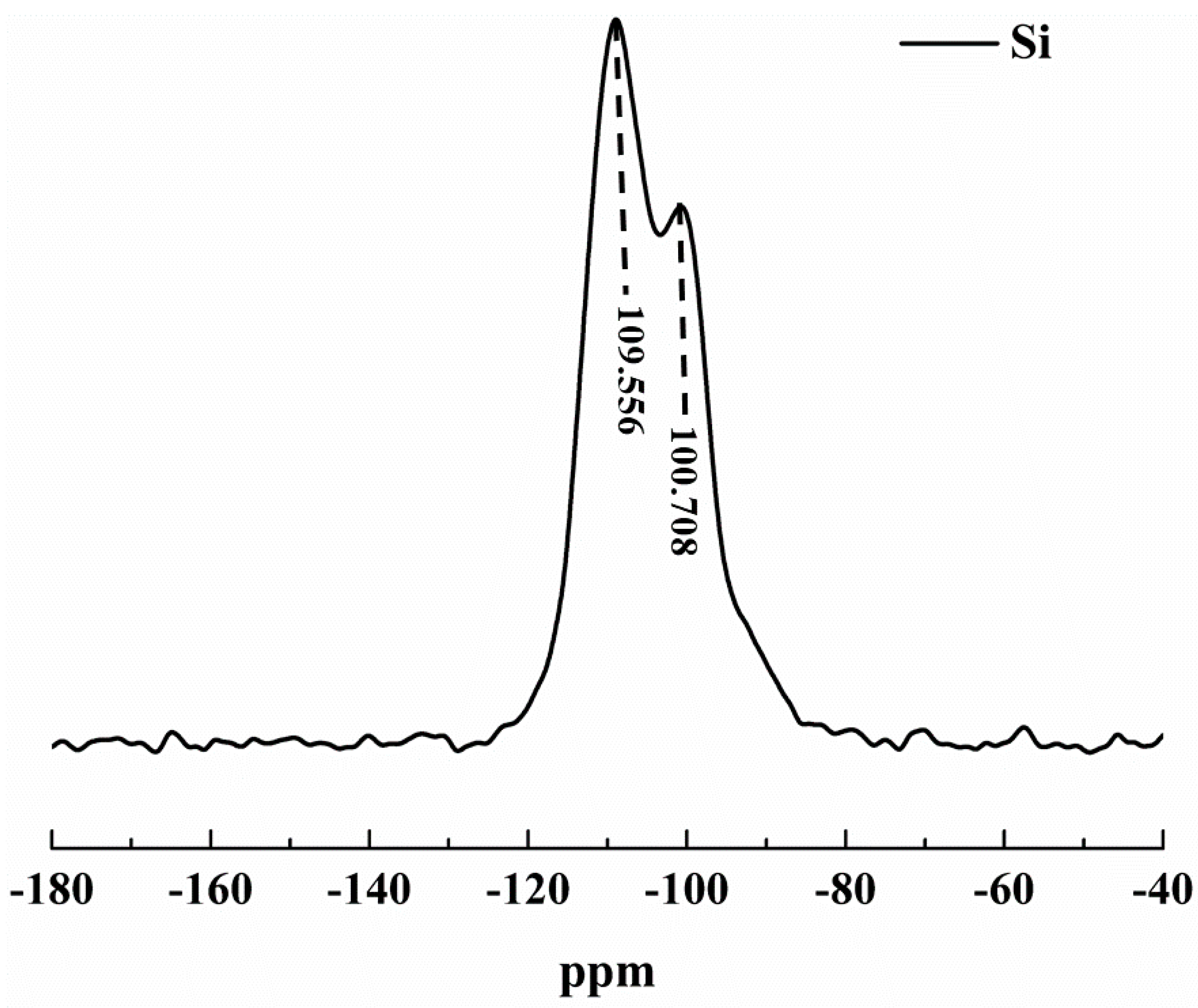
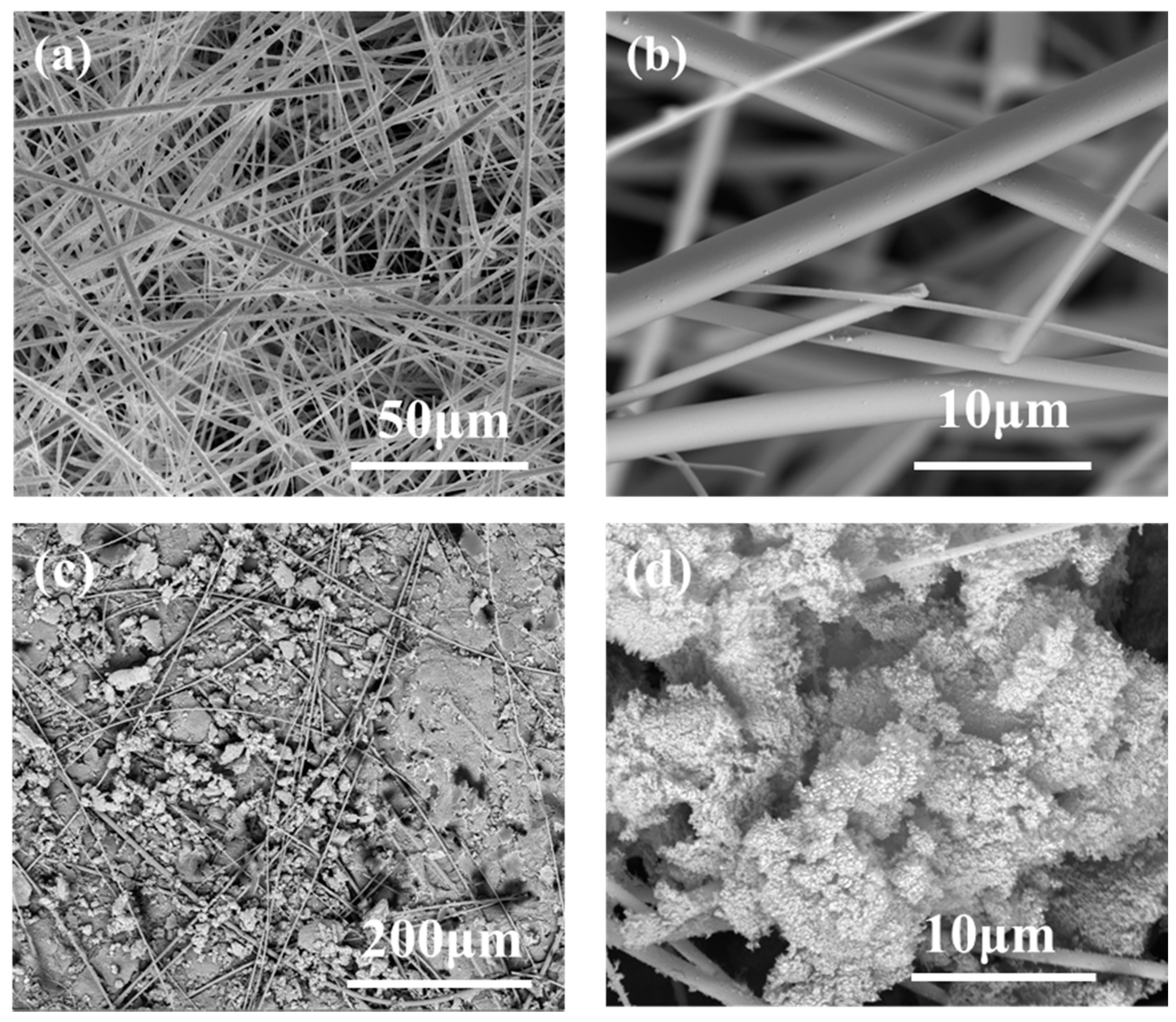

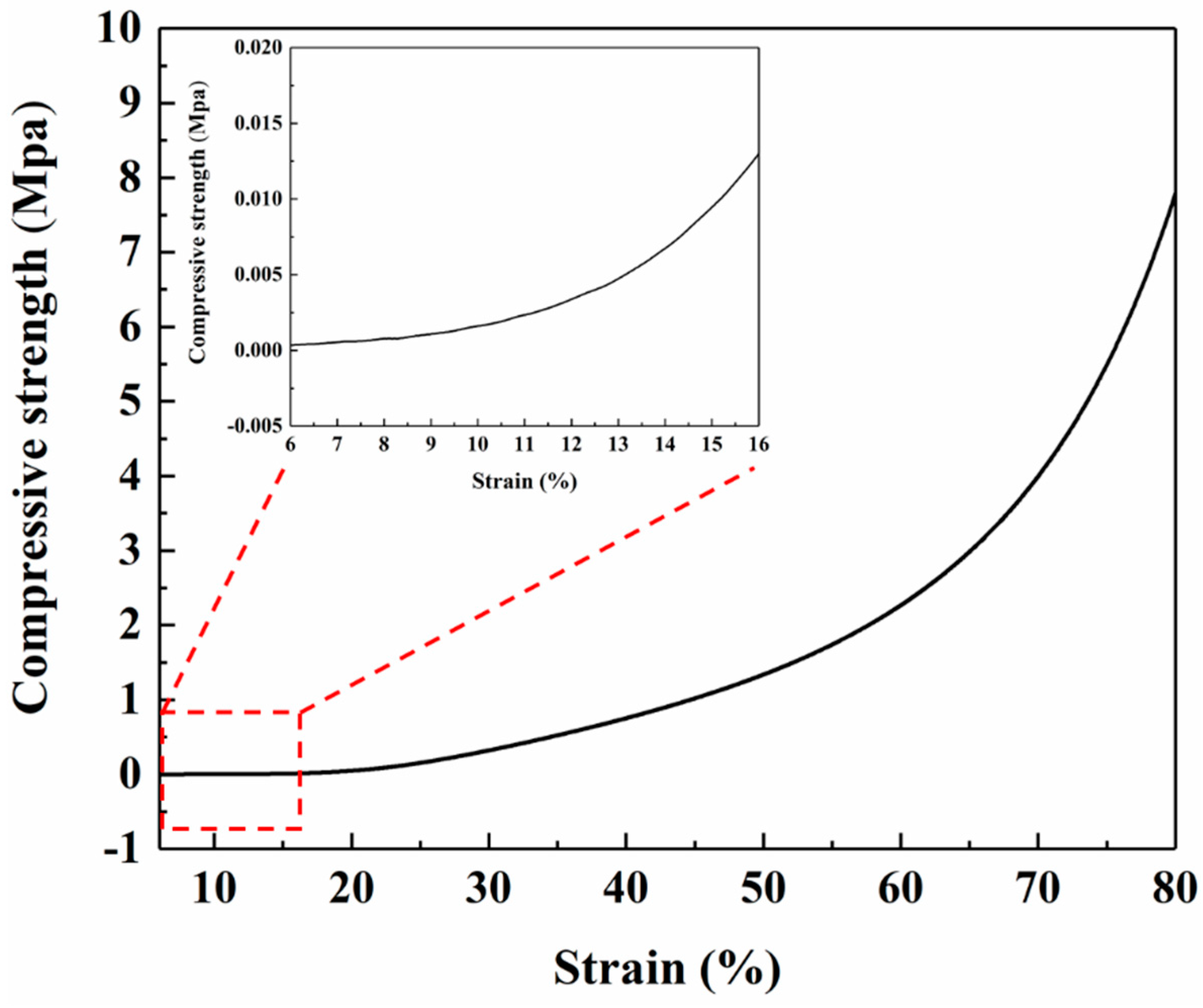

| C1 | C1-150 | C2 | C2-150 | C3 | C3-150 | |
|---|---|---|---|---|---|---|
| 15 mm, 60 min | 78 °C | 56 °C | 71 °C | 53 °C | 72 °C | 53 °C |
| 20 mm, 80 min | 72 °C | 55 °C | 72 °C | 53 °C | 69 °C | 52 °C |
| 25 mm, 90 min | 66 °C | 50 °C | 62 °C | 48 °C | 62 °C | 47 °C |
| 30 mm, 120 min | 58 °C | 47 °C | 58 °C | 45 °C | 57 °C | 44 °C |
© 2019 by the authors. Licensee MDPI, Basel, Switzerland. This article is an open access article distributed under the terms and conditions of the Creative Commons Attribution (CC BY) license (http://creativecommons.org/licenses/by/4.0/).
Share and Cite
Shang, L.; Lyu, Y.; Han, W. Microstructure and Thermal Insulation Property of Silica Composite Aerogel. Materials 2019, 12, 993. https://doi.org/10.3390/ma12060993
Shang L, Lyu Y, Han W. Microstructure and Thermal Insulation Property of Silica Composite Aerogel. Materials. 2019; 12(6):993. https://doi.org/10.3390/ma12060993
Chicago/Turabian StyleShang, Lei, Yang Lyu, and Wenbo Han. 2019. "Microstructure and Thermal Insulation Property of Silica Composite Aerogel" Materials 12, no. 6: 993. https://doi.org/10.3390/ma12060993





